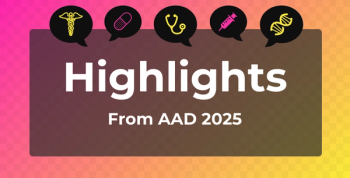
Tricuspid Regurgitation Reliable Prognostic Indicator of PAH Severity
Key Takeaways
- Moderate/severe tricuspid regurgitation in PAH patients is linked to worse survival, especially with preserved TAPSE or low-risk TAPSE/sPAP ratios.
- The study emphasizes the prognostic value of tricuspid regurgitation in stratifying low-risk PAH patients, impacting survival predictions.
Despite knowledge of the benefits of right heart hemodynamic measures for evaluating patient prognosis in the setting of pulmonary arterial hypertension (PAH), gaps remain in a defined role for tricuspid regurgitation as it relates to echocardiographic phenotype.
Following a diagnosis of low-risk
Their single-center, retrospective, longitudinal analysis, published recently in
The mean (SD) patient age was 58 (18) years, 71% were women, the median body mass index was 27.2 (95% CI, 23.1-31.0) kg/m2, and 86% had World Health Organization functional class III/IV disease. The most common types of PAH seen were idiopathic (45%) and connective tissue disease (33%), mean baseline systolic blood pressure was 124 (20) mm Hg, median baseline creatinine was 0.81 (95% CI, 0.70-1.3) mg/dL-1, mean right atrium area was 25 (8) cm2, and the top therapies at discharge were an endothelin receptor antagonist (ERA) plus a phosphodiesterase (PDE) inhibitor (52%) or monotherapy with either an ERA or a PDE inhibitor.
Per degree of tricuspid regurgitation (0/1+, mild/none; 2/3+, moderate/severe), patients diagnosed with moderate tricuspid regurgitation or worse saw correlations with worse TAPSE and TAPSE/sPAP; had similar right ventricular (RV) areas, transverse diameters, and short:long axis ratio on echocardiography; and worsened RV longitudinal diameter:
- TAPSE: 1.6 (0.6) vs 1.8 (0.6) cm, respectively (P = .033)
- TAPSE/sPAP: 0.19 (0.10) vs 0.28 (0.16) mm/mm Hg (P < .001)
- RV end area:
- Diastolic: 28.5 (6.7) vs 30.4 (7.6) cm2 (P = .197)
- Systolic: 21.7 (7.5) vs 21.9 (6.7) cm2 (P = .929)
- RV transverse diameter: 43.2 (8.1) vs 42.8 (8.1) mm (P = .831)
- Short:long axis ratio: 1.20 (0.17) vs 1.19 (0.11)
- RV longitudinal diameter: 74.4 (9.1) vs 79.8 (9.2) mm (P = .030)
Peak oxygen consumption and right atrial pressure also were also impaired among those with moderate or severe tricuspid regurgitation, according to right heart catheterization, which is used to confirm diagnosis following evidence of pulmonary hypertension seen on echocardiography.2 The median follow-up was 38.8 (95% CI, 21.5-56.3) months.1
Overall, on univariate Cox analysis, moderate/severe tricuspid regurgitation was the only echocardiographic parameter linked to worse survival (HR, 3.34; 95% CI, 1.73-6.45; P < .001) after adjusting for demographics. However, a subanalysis conducted among patients with reduced or preserved TAPSE showed moderate/severe tricuspid regurgitation had a negative prognostic value solely among patients with preserved TAPSE (HR, 9.26; 95% CI, 2.62-31.69; P < .001), and among patients with low- or intermediate/high-risk TAPSE/sPAP, moderate or worse tricuspid regurgitation had a negative prognostic value only in low-risk patients (HR, 17.9; 95% CI, 2.1-150.1; P = .008).
Regarding their findings, the study authors write that tricuspid regurgitation holds significant prognostic value and that its measure “is critical to stratify the prognosis of patients who would have been considered at low risk based on normal values of TAPSE or of TAPSE/sPAP.” Their results also hold value because they both echo previous research and expand on those findings.
Still, there are limitations to their data, including the small sample size and the fact that tricuspid regurgitation degree was not quantitatively measured beyond the mild/none and moderate/severe classification. Future studies are needed to evaluate their results.
References
- Ghio S, Moschella MM, Baccelli A, et al. Clinical and prognostic role of tricuspid regurgitation in incident patients with pulmonary arterial hypertension. ERJ Open Res. 2025;11(4):00929-2024. doi:10.1183/23120541.00929-2024
- Pulmonary hypertension. Mayo Clinic. Accessed August 12, 2025.
https://www.mayoclinic.org/diseases-conditions/pulmonary-hypertension/diagnosis-treatment/drc-20350702
Newsletter
Stay ahead of policy, cost, and value—subscribe to AJMC for expert insights at the intersection of clinical care and health economics.







































